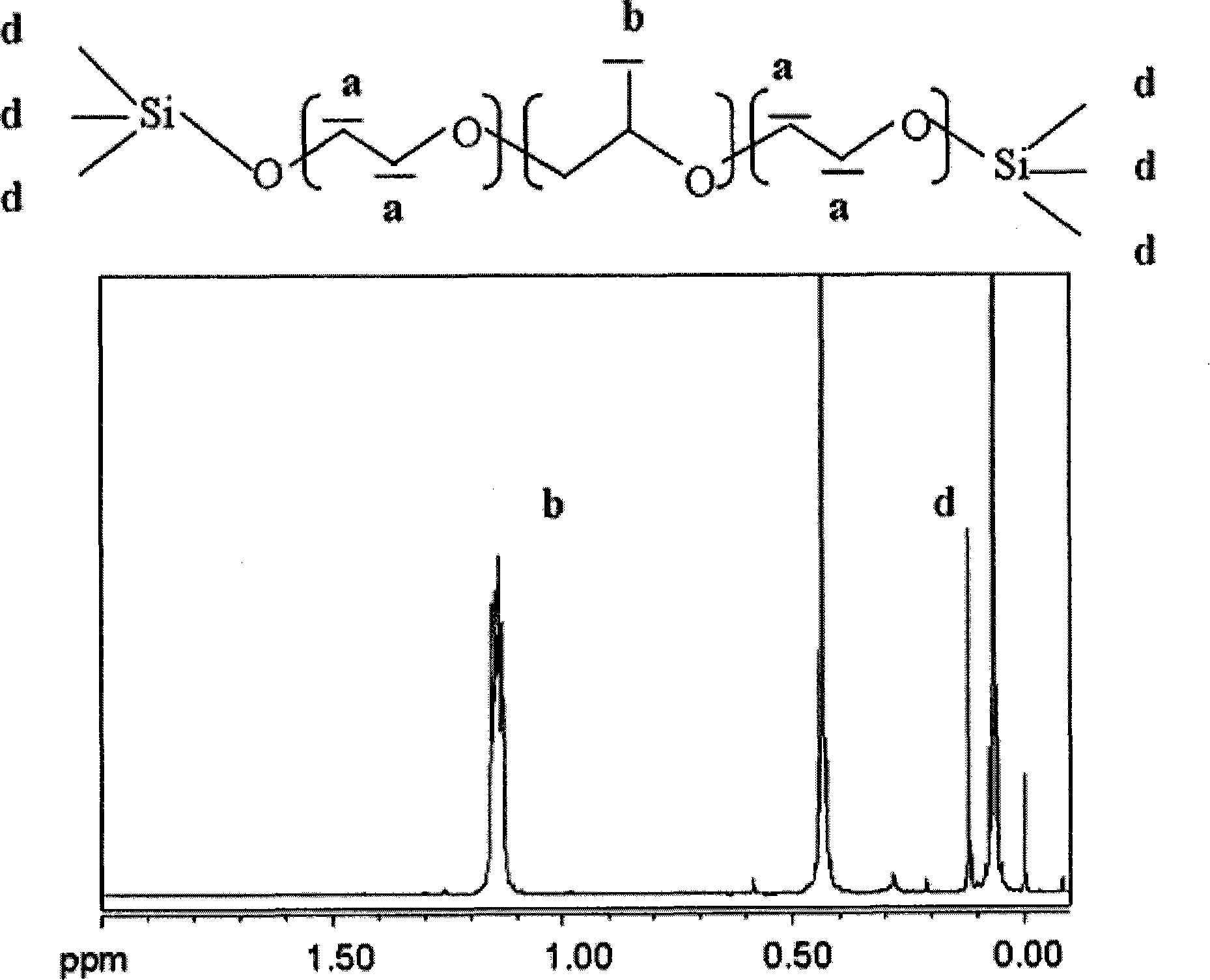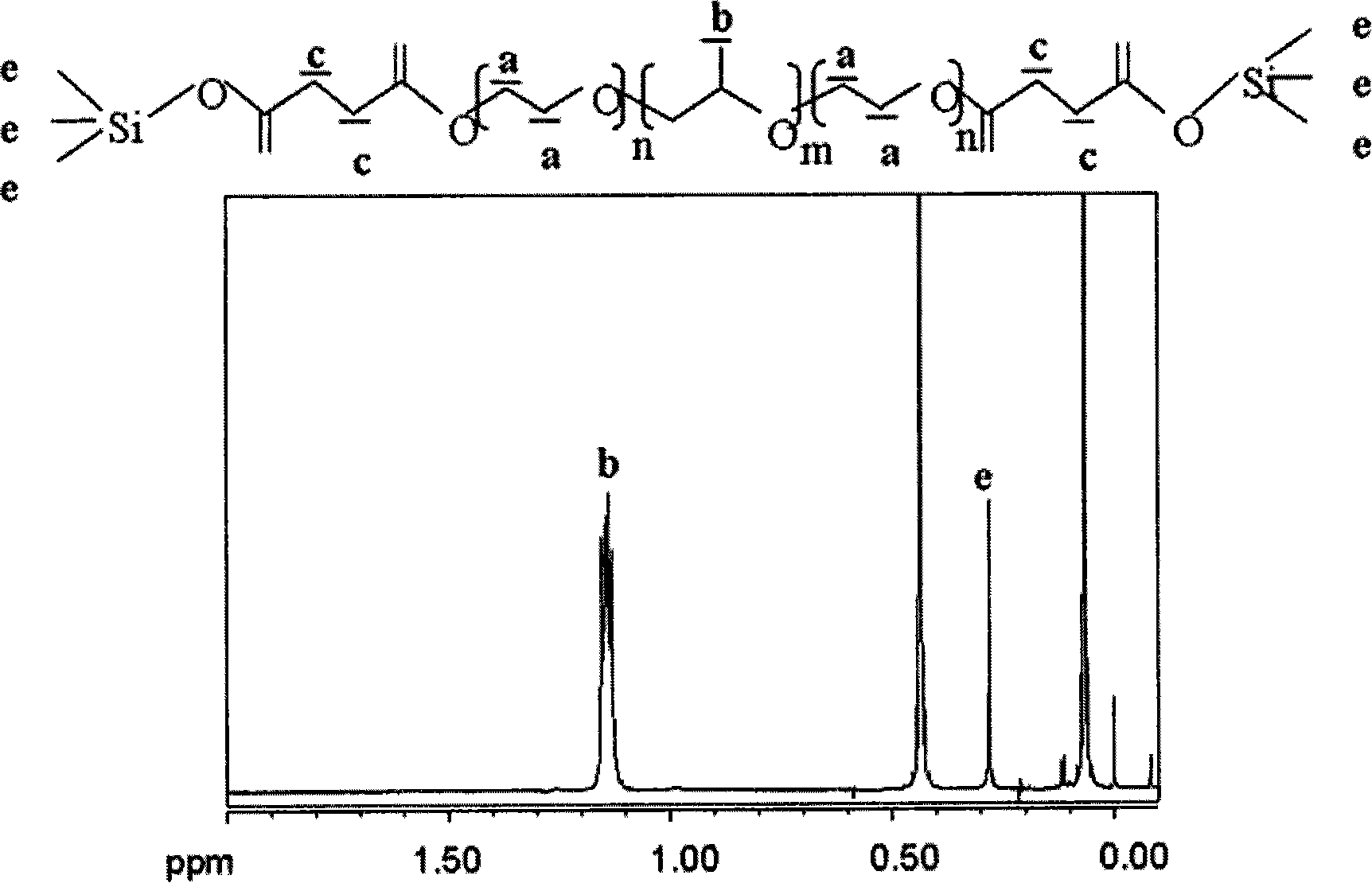Composition for inhibiting adhesion
A composition and polymer technology, applied in the direction of drug combination, medical preparations with non-active ingredients, medical preparations containing active ingredients, etc., can solve the problem of no adhesion inhibitor developed
- Summary
- Abstract
- Description
- Claims
- Application Information
AI Technical Summary
Problems solved by technology
Method used
Image
Examples
preparation example 1
[0113] Preparation Example 1. Synthesis of a multi-block copolymer composed of Poloxamer 407 using succinyl chloride
[0114] 10g Poloxamer 407 (Pluronic F-127, BASF, molecular weight: 12,500 Daltons, PEO:PPO=101:56) was poured into a 100-ml single-neck round-bottom flask, and heated in an oil bath heated at 120°C, and then heated for 2 hours It eliminates the water contained in the polymer and reduces pressure at the same time. After the reduced pressure was removed, the reaction temperature was set to 100°C while flowing nitrogen, and then 100 ml of acetonitrile was added to the flask. The reaction flask is equipped with a Dean Stark device and a cooling device.
[0115] After removing 20 ml of acetonitrile by steaming off through the Dean-Stark device to completely remove the water in the reactant, 1 equivalent of succinyl chloride was added to the reservoir of the Dean-Stark device and reacted for 24 hours. After 24 hours, 96ul of succinyl chloride was added to the Dean-Sta...
preparation example 2
[0118] Preparation Example 2. Using adipoyl dichloride to synthesize a multi-block copolymer composed of poloxamer 188
[0119] In addition to using Poloxamer 188 (Pluronic F-68, BASF, molecular weight: 8000 Daltons, PEO:PPO=80:27) as the basic unit of the multi-block copolymer and using adipoyl chloride as the dicarboxylic acid linker, according to the preparation example 1 The same method used in the synthesis of a multi-block copolymer with an average molecular weight of 160,000. By using nuclear magnetic resonance to generate a peak near 4.2 ppm and analysis of the terminal peak due to the introduction of dicarboxylic acid, the prepared multi-block copolymer was identified as a poloxamer linked by dicarboxylic acid.
preparation example 3
[0120] Preparation Example 3. Synthesis of a multi-block copolymer composed of Poloxamer 237 using succinyl chloride
[0121] In addition to using poloxamer 237 (BASF, molecular weight: 7000 Daltons, PEO:PPO=64:37) as the basic unit of the multi-block copolymer, succinyl chloride is used as the dicarboxylic acid linking group, according to the preparation example Using the same method in 1, synthesize a multi-block copolymer with an average molecular weight of 150,000. By using nuclear magnetic resonance to generate a peak near 4.2 ppm and analysis of the terminal peak due to the introduction of dicarboxylic acid, the prepared multi-block copolymer was identified as a poloxamer linked by dicarboxylic acid.
PUM
| Property | Measurement | Unit |
|---|---|---|
| molecular weight | aaaaa | aaaaa |
| phase transition temperature | aaaaa | aaaaa |
| molecular weight | aaaaa | aaaaa |
Abstract
Description
Claims
Application Information
 Login to View More
Login to View More - R&D
- Intellectual Property
- Life Sciences
- Materials
- Tech Scout
- Unparalleled Data Quality
- Higher Quality Content
- 60% Fewer Hallucinations
Browse by: Latest US Patents, China's latest patents, Technical Efficacy Thesaurus, Application Domain, Technology Topic, Popular Technical Reports.
© 2025 PatSnap. All rights reserved.Legal|Privacy policy|Modern Slavery Act Transparency Statement|Sitemap|About US| Contact US: help@patsnap.com



